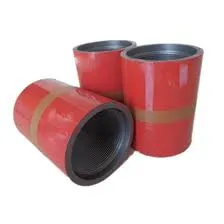- Afrikaans
- Albanian
- Amharic
- Arabic
- Armenian
- Azerbaijani
- Basque
- Belarusian
- Bengali
- Bosnian
- Bulgarian
- Catalan
- Cebuano
- Corsican
- Croatian
- Czech
- Danish
- Dutch
- English
- Esperanto
- Estonian
- Finnish
- French
- Frisian
- Galician
- Georgian
- German
- Greek
- Gujarati
- Haitian Creole
- hausa
- hawaiian
- Hebrew
- Hindi
- Miao
- Hungarian
- Icelandic
- igbo
- Indonesian
- irish
- Italian
- Japanese
- Javanese
- Kannada
- kazakh
- Khmer
- Rwandese
- Korean
- Kurdish
- Kyrgyz
- Lao
- Latin
- Latvian
- Lithuanian
- Luxembourgish
- Macedonian
- Malgashi
- Malay
- Malayalam
- Maltese
- Maori
- Marathi
- Mongolian
- Myanmar
- Nepali
- Norwegian
- Norwegian
- Occitan
- Pashto
- Persian
- Polish
- Portuguese
- Punjabi
- Romanian
- Russian
- Samoan
- Scottish Gaelic
- Serbian
- Sesotho
- Shona
- Sindhi
- Sinhala
- Slovak
- Slovenian
- Somali
- Spanish
- Sundanese
- Swahili
- Swedish
- Tagalog
- Tajik
- Tamil
- Tatar
- Telugu
- Thai
- Turkish
- Turkmen
- Ukrainian
- Urdu
- Uighur
- Uzbek
- Vietnamese
- Welsh
- Bantu
- Yiddish
- Yoruba
- Zulu
tubing pup joint
Understanding Tubing Pup Joints in Oil and Gas Operations
In the oil and gas industry, efficiency and reliability are paramount for successful drilling and production operations. Among the critical components that facilitate these processes are tubing pup joints. Tubing pup joints are short lengths of pipe that are used to connect sections of tubing in a well. They play a significant role in various applications, from compensating for changes in length due to temperature variations to allowing for the installation of downhole equipment.
Pup joints are designed to the same specifications as standard tubing, which ensures compatibility and maintains the integrity of the wellbore. Depending on the specific needs of a project, these joints can come in various sizes and wall thicknesses. While their lengths typically range from 2 to 6 feet, custom lengths can also be manufactured to meet the unique requirements of particular wells. This flexibility is crucial since each well can have varying geometry and downhole conditions.
One primary function of tubing pup joints is to absorb thermal expansion
. When fluid is pumped through the tubing, especially during high-temperature operations, the tubing expands. If this expansion is not accounted for, it can lead to excessive stress that may damage the tubing or other components of the well. By incorporating pup joints, which can effectively accommodate this expansion, operators can enhance the durability and longevity of the tubing string.tubing pup joint

Moreover, pup joints also facilitate the installation of specific downhole tools, such as packers and valves. These tools often require precise placement within the wellbore, and tubing pup joints provide the necessary flexibility to achieve this. This is especially important in production operations where optimal placement can maximize extraction efficiency and minimize downtime associated with maintenance.
The manufacturing process of tubing pup joints also warrants attention. It involves stringent quality controls to ensure that each joint meets industry standards. Materials used are typically high-strength steel grades, which provide the necessary durability to withstand harsh downhole environments. Furthermore, proper inspection and testing ensure that the joints are free from defects, which can otherwise lead to costly failures during operations.
In conclusion, tubing pup joints are indispensable components in oil and gas operations. Their ability to bridge gaps, accommodate thermal expansion, and facilitate the installation of downhole tools makes them a vital consideration in well design and construction. As the industry continues to push for efficiency and reliability, understanding and utilizing components like tubing pup joints will play a key role in achieving operational excellence. The ongoing advancements in materials and manufacturing processes further enhance their reliability, ensuring a stable foundation for future exploration and production endeavors.
-
Tubing Pup Joints: Essential Components for Oil and Gas OperationsNewsJul.10,2025
-
Pup Joints: Essential Components for Reliable Drilling OperationsNewsJul.10,2025
-
Pipe Couplings: Connecting Your World EfficientlyNewsJul.10,2025
-
Mastering Oilfield Operations with Quality Tubing and CasingNewsJul.10,2025
-
High-Quality Casing Couplings for Every NeedNewsJul.10,2025
-
Boost Your Drilling Efficiency with Premium Crossover Tools & Seating NipplesNewsJul.10,2025







